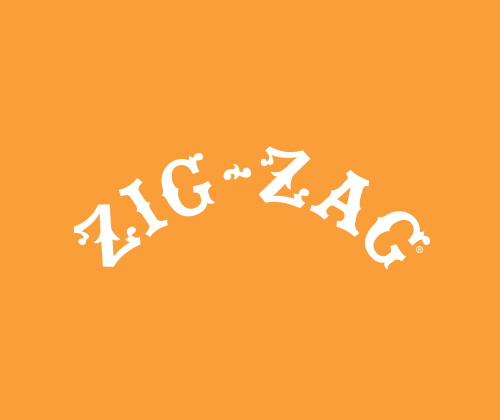Outer Space
Symmetry and the (cannabis) universe.
Written By: MAYA CASSIDY

Visiting Michael Rotondi in his Downtown LA office is an adventure of earthly delights, ranging from the museum cases displaying concertina notebooks crammed with architectural drawings and notes to the eclectic library of a man whose interests run the gamut from history to philosophy to Buddhism to spiritualism, there’s something for everyone on these shelves. Rotondi is only too happy to lend it to you. As one of the founding members, directors, and subsequent educators of The Southern California Institute of Architecture (SCI-Arc), it’s not out of character for Rotondi to ask some existential questions. Can architecture influence the way we behave? Can it bring out the goodness in us rather than the bad?
There are concepts Rotondi considers when exploring a space. Symmetry is an important one. By moving out of the box of symmetry in the classical sense, we can begin to play with these expansive ideas. Inspired by Frank Lloyd Wright’s Hollyhock House, Rotondi observed a space that was diagrammatically bilaterally symmetrical but experientially asymmetrical. “When you draw the diagram, you see the bilateral symmetry, but then you see two things: variations on the left and the right. It makes you wonder why you think this feels familiar to you: your body picks up things before your mind does. It picks up order and proportion. If you don’t look very long, your body picks it up even though your mind never does.” This is one in a quiver of options to bring higher functionality and impact to a space by leveraging something perhaps unconsidered.
Thinking unconventionally is a path to genius. Shunryu Suzuki’s line “In the beginner’s mind there are many possibilities, but in the expert’s, there are few,” resonates strongly with Rotondi, who aspires to such spiritual thinking in architecture and life. “When you don’t know anything, it’s all a science experiment. As you age, your mind narrows, and you’re simply fulfilling expectations. Is it possible to neutralize those expectations and look at things as if it’s the first time?” In its early years, SCI-Arc had little structure and no rules; instead, the students were required to become architects of their own education. The school sped through its accreditation process and is still widely regarded as one of the nation’s top innovative architecture schools more than four decades later.

Looking at the world today, Rotondi sees cannabis as a whole new opportunity for imagination. “Selling cannabis isn’t like selling shoes; there needs to be a total aesthetic—the ambiance of a store comes from whatever the product is. When I say total aesthetic, I’m not simply referring to the visual. Any successful place that enjoys repeat customers is a place with a vibe—it engages all of your senses. I’m interested in the overall effect—when people can’t pinpoint one thing they like about a place, it’s just a general feeling they absorbed.” What becomes clear is Rotondi’s desire for architecture to permeate the senses, bringing to mind Maya Angelou’s words: “People won’t remember what you say. They’ll remember how you made them feel.”
Rotondi observes that architecture can be a prompt. “It has the potential to significantly reshape and elevate the cannabis industry, influencing both the business side and the public’s perception of cannabis culture. Most of the places I’ve seen around town are designed purely to move units. If you don’t make that the primary objective, then it can become a spatial experience.” Much like Rotondi would confer with chefs before designing a restaurant, he suggests the value of consulting the ‘sommeliers’ of weed so they can imagine how their products might best be considered and consumed.

Cannabis can produce a wide range of effects curated to the customer’s tastes, and with this in mind, Rotondi envisages “designing really cool spaces that remove people from the world—for just a little bit. Architecture, as I imagine it, can help redefine cannabis consumption as a social, communal, and wellness-focused activity. Much like restaurants and wineries, cannabis businesses can use architecture to turn their spaces into destination locations—and with the lounges, they can attract tourists and customers looking for more than just a transactional experience.”
Rotondi grew up in Los Angeles with Italian immigrant parents—a chef and a seamstress—who demonstrated how to make something out of nothing. “I liked imagining things to be built.” As a child, he watched his father at work and began to understand the crucial role of the restaurant space. “In a restaurant, I would start by asking the chef, ‘What do you want people to feel when eating your food?’ And then convert that into bricks and mortar.” Rotondi is responsible for some of the iconic restaurants of the LA food scene in the 80s and 90s: LA Nicola, Angeli Caffe, 72 Market Street, and Kate Mantilini, to name a few. “When you're designing a space—whatever kind of public space—it’s what brings people together and what keeps them together—it’s about Dwell Time.” For corporations, Rotondi points out that the concept of Dwell Time converts directly into dollars, but for him, it’s about creating a space where people can become friends and give meaning to their connections.

As an architect, Rotondi never liked to stay in one place for too long. No sooner had he been given the title of ‘restaurant designer’ than he backed away from the culinary world. Committed to the idea of fresh sources, Rotondi went on to examine the gaming world, realizing that every space, no matter what it is selling, needs to incorporate a behavioral system within its boundaries. Designing any type of affinity space—a restaurant, a dispensary, a lounge—Rotondi believes in the importance of showcasing three main speeds: 1) The Automat—you come in, inhale a pastry, and you’re out, 2) The Deli Counter, where you linger longer, order a pizza, and you’re in and out within maybe thirty to sixty minutes, and 3) The Sommelier Experience, where you order a full meal, study the wine list and eat for 2-3 hours. The different speeds manifest themselves spatially and architecturally.
Setting the curve and experimenting with space is intrinsic to Rotondi’s character. “Confusion is basically a source of creativity—real curiosity is about things you don’t know. You need structure in order to have freedom, but not too much. When you get too much structure it weighs you down. My role was to discover the equilibrium between structure and freedom—everything in the universe is a symmetry operation. There’s a line through it all.” When his son was sixteen, father and son embarked on a bonding trip into the wilderness, whitewater rafting. Following the ‘line’ in the river became a way of survival, of circumventing the rocks and avoiding certain death. “The water knows where the deepest parts and the fewest of rocks are. There’s always a line. It’s basically the force of least resistance, the eye of the storm.”
The line, he believes, can be traced everywhere—in buildings, in faith, in connection, in activity, between people, places, and things. Architecture occupies a unique role in its capacity to influence the body and the mind in different ways and at varying speeds. “As an architect, you need to create a context for people to let them become the best they can possibly be.” And in the burgeoning cannabis world, isn't that always the greatest goal?
















